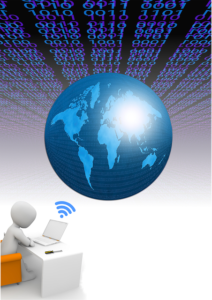 One of my observations about the world of technology today is that the key drivers of the newest tech are first world countries. These are countries like the US, Europe, Japan, and Germany. They are the ones currently blazing trails in terms of technology in the world market today.
One of my observations about the world of technology today is that the key drivers of the newest tech are first world countries. These are countries like the US, Europe, Japan, and Germany. They are the ones currently blazing trails in terms of technology in the world market today.
However, much of the technology being introduced today are not always applicable to other countries, especially developing ones. For example, the internet in the Philippines or in other third-world nations is more unreliable and slower compared to that in the United States or in Japan.
So developing mobile applications for the Philippine market and the US market will vary. Developing enterprise applications for businesses in the Philippines is totally different from developing apps in the US – primarily because computer knowledge or literacy is different between the two nations.
That’s why it’s important for us to come up with our own framework or technology that is designed for all markets.
Many popular applications nowadays don’t always work if you are offline or have slow internet. For example, Facebook or certain mobile games won’t load if your phone is offline. As developers, developing apps on the same set of technology used by these first-world companies limits the usability of our applications.
So what we need to do is understand the current state of technology then come up with our own solutions, given our own infrastructure. This is actually an opportunity for us to develop applications that are better suited to our country – to our market – than other parts of the world.
Let’s look at the mobile app and internet situation. Since the Philippines has more unreliable internet, it’s important that apps developed for the Philippine market have an offline mode and do an automatic database synchronization once connected to the internet.
This kind of functionality is not necessarily an important design criterion when catering to US markets. But this is most important when catering to the Philippine market. Foreign apps aren’t always suitable for us – so there’s the opportunity for us to create a more suitable application for Philippine markets by coming up with our own framework that allows easy online and offline sync.
After doing much research on the net, I’ve found that there are very few frameworks created for online and offline use. Not only running offline, frameworks for sending out data in an efficient manner with the smallest set of data possible to synchronization is also limited.
This is what we did with our mobile POS called Slingshot. We created our own framework that does the data sync – online and offline – then sends out the data at the most efficient size.
We’ve also introduced our own compression algorithm, lookup tables to ensure that data are sent in the smallest size possible. We even thought of sending the data sync through SMS messages because SMS is more widely accessible in the Philippines.
That’s why it’s important that, as developers, we don’t look only into existing framework and technology available. Because many out there are developed by great engineers in the first world that don’t necessarily consider the situation in other parts of the world.
So as developers, we have to look beyond what’s available and find ways to create our own technological solutions given the situation of where we are.
We should not just follow the standards set by first worlds but we should set our own standards – for our own good and our own market as well.
Related Article: Traction for Startups: Start with a Good Idea

